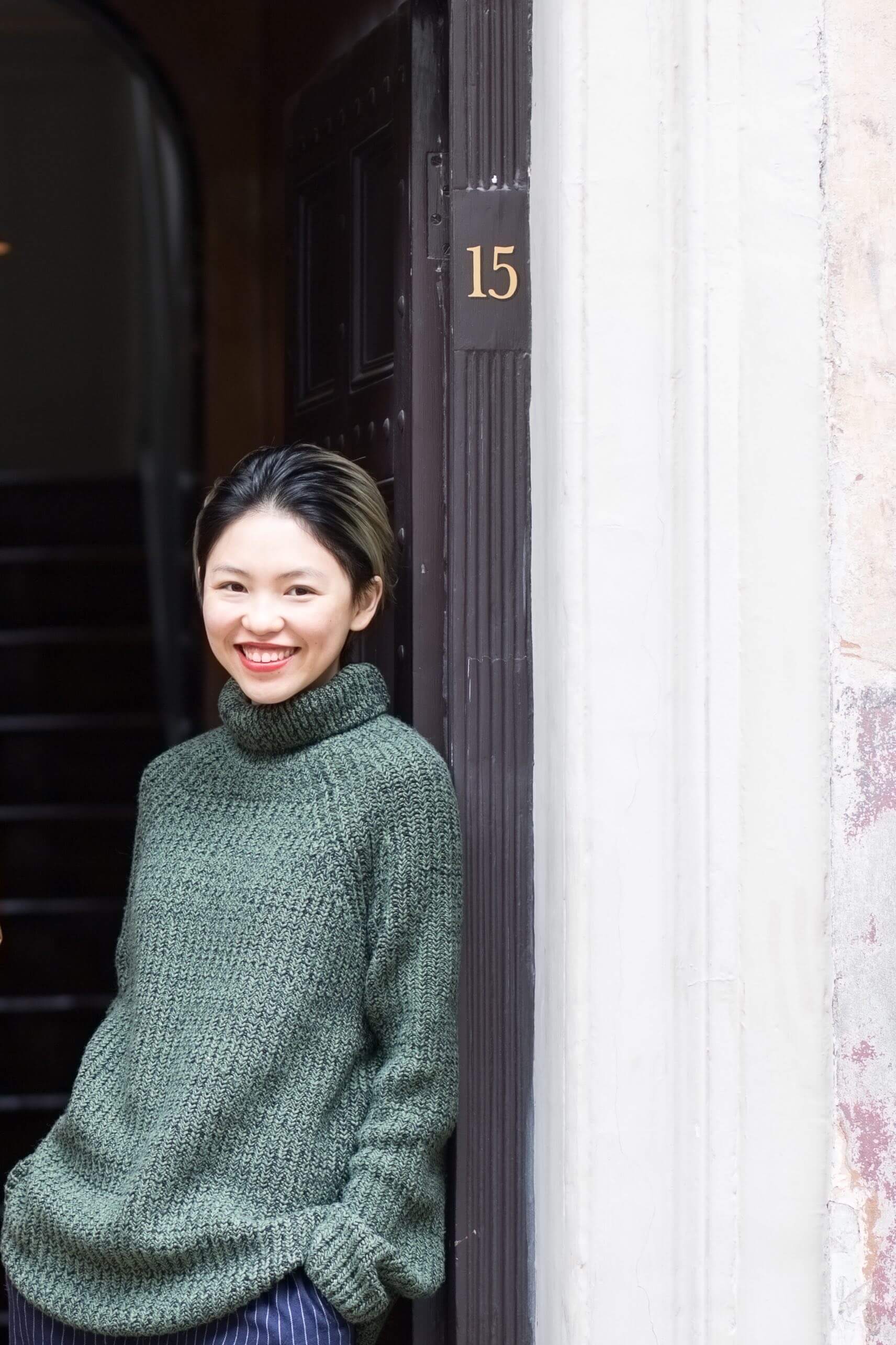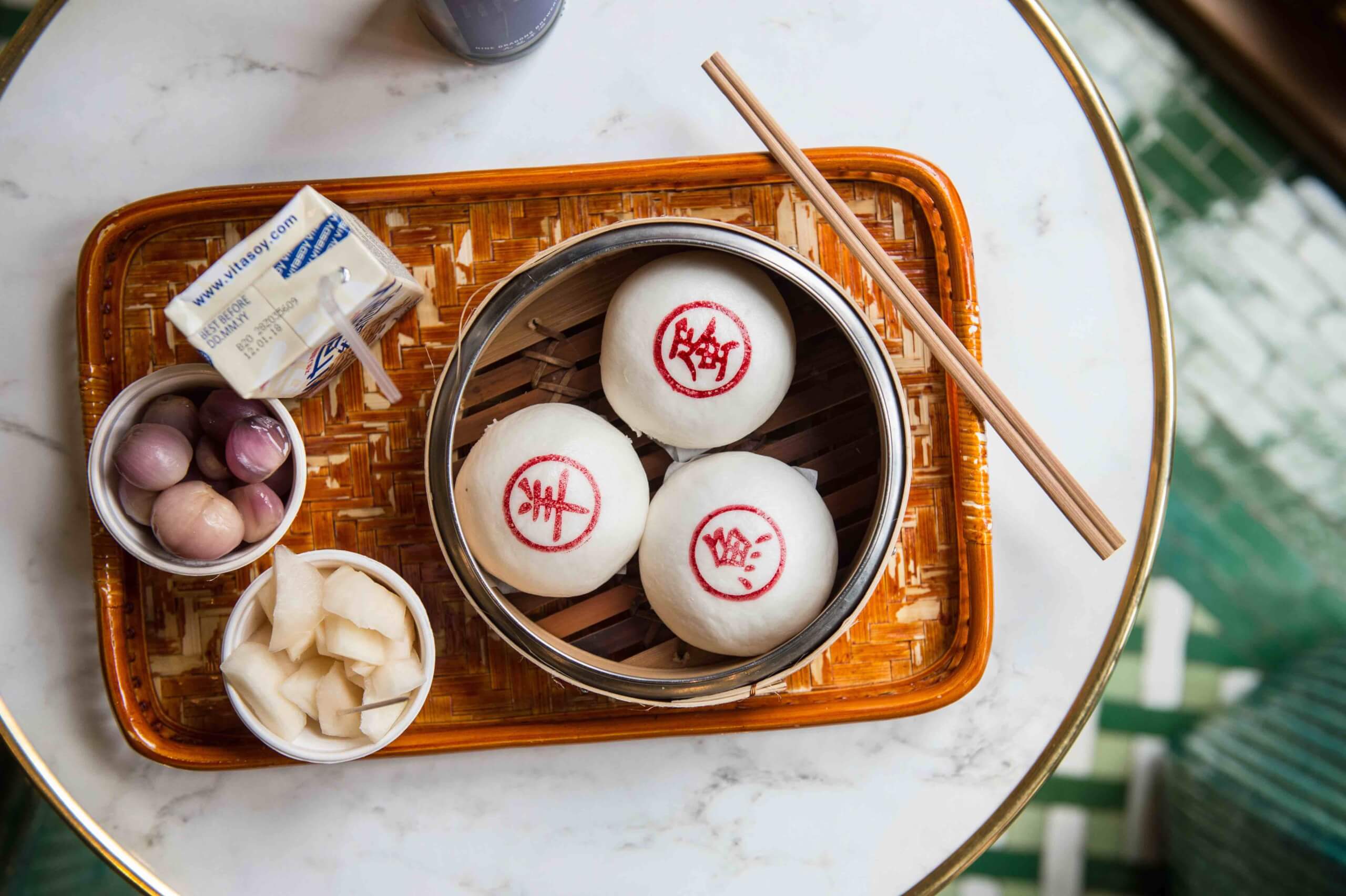About Time You Met: Z He, Co-founder of Bun HouseBy Angelica Malin
You can smell Bun House in Soho a mile off; the whiff of their freshly made buns are entrancing. Bun House brings together the flavours of China, with modern touches and quirky decor – and their newly launched brunch is not to be missed. We chatted to co-founder Z He, about family meals, their new early morning eats and those legendary Canton-style buns:
You’re co-founder of Bun House in Soho – what’s the idea behind the restaurant?
Bun House and Tea Room consists of two parts: Bun House upstairs is a quick service bun cafe and Tea Room downstairs is a Chinese speakeasy-style cocktail den.
Bun House was founded to champion an underrepresented speciality: the closed, filled, buns of dim sum. It’s one of the most versatile comfort foods in Cantonese cuisine, but previously none in London were fresh and well made. Bun House was essentially created to deliver these steamy and fluffy goodies (made fresh every day), with quality ingredients, and an authentic-with-a-twist flavours to every hungry Londoner.
We pair our design with the food; a colonial Hong Kong inspired setting with tile, dark wood, and bamboo, for customers to enjoy their steamy buns and sip oolong tea.
The Tea Room focuses on making every cocktail a celebration of Chinese spirits and ingredients. The idea stems from our frustrations of the everpresent shallow interpretations of ‘Asian’ cocktails that pop up on every bar/lounge menu. Lychee and mandarin became the ultimate cliche Chinese ingredient, usually mixed with vodka for some reason, despite the wide variety of fruit, herb, spices, and vegetables available, let alone the breadth of interesting Chinese alcohol. Baijiu is still not easy to find outside of Chinatown, yet it’s the most imbibed spirit in the world. We felt that it was about time we gave it the setting and introduction to London it deserved.
Did you have any previous experience in restaurants before opening Bun House?
Bun House and Tea Room is our very first independent culinary venture. Before this I was an interior architect by profession. This project gave me a blank canvas for design, and the food aspect is purely passion driven.
You grew up in Southern China – what’s your fondest food memory?
My fondest food memory was also one of my very first – I must have been 4 or 5 years old. On a wintery evening at my grandparent’s house all my uncles and aunties, along with my cousins, would come round for a hot pot dinner and a very large circular table was set up in the middle of the kitchen. Perhaps because I was so small I remember that the table was so large, or maybe the kitchen was so small – and there was only just enough space for us all to crowd around it to eat.
There were all kinds of fresh leafy vegetables, paper thin fish slices, shrimp rolled into little balls, and chicken roughly chopped into similar bite sizes, all raw and neatly arranged on the metal plates. In the centre of the table was a Camper stove uninterruptedly simmering a pot of milky-looking broth (which I later learned was a fish broth prepared the night before with the heads and bones of the fish). The adults would pick up one of the morsels and dip it in the broth, hold on to it for a few seconds and pull it out of the soup, and then a quick dip into a sauce plate filled with soy sauce and fresh scallions before eating. Children were not allow to cook their own food in the broth, so my parents would cook a bunch of different things with a mesh ladle in the broth for me and drop the steamy goodies into my bowl. They also reminded that I have to blow out the steam before I put it in my mouth. Up until this day hot pot remains one of my favourites meals.
Favourite dish growing up?
I grew up with many good meals, but my favourite dish is surprisingly boring and unusual. I love the water that is used to blanch green veg – my favourite blanch water was with Chinese lettuce. My grandma would put a couple slices of ginger in it too and it’s kind of like a clear green broth. I loved it.
What’s the hardest part of setting up and opening a restaurant?
Other than the usual boring administrative things of setting up a restaurant, I think one of the most difficult thing to me is eliminating menu items down to the absolute showstoppers. They’re all our babies and, to us anyway, very exciting. I have a hard time not giving them the spot they deserve on the menu!
We love the 1960’s Hong Kong inspired interiors – where did you source the pieces and furniture from?
With inspirations taken from the 1960’s Hong Kong tea houses, the design for Bun House and Tea Room infuses British colonial elements with traditional Chinese essence. As a trade hub at the time, 60’s Hong Kong possessed lush international charm. In order to achieve the sense of a cultural melting pot, we have sourced from different parts of the world; from imported hand-glazed Chinese garden stools (custom made from my hometown in China) and hand cut Moroccan floor tiles, rattan furniture from Denmark, to locally bespoke British craft wall tiles and dark wood carpentry work with Chinese inspired ornate details, all resting harmoniously on a mingle of emerald green and a cloud of steam.
Who designed the menu?
For the food, I worked very closely with our chefs to design the menu for both Bun House and Tea Room. Since I’m not a professionally trained chef, I draw a lot inspirations from my childhood favourites which crossover with other culinary experiences I’ve garnered from travelling as an adult. Both worlds have created our very distinct menu for both Bun House and Tea Room.
For the cocktails in Tea Room, my husband, also a co-founder, worked extensively with our bartenders, in a way like cooks, discovering ways to bring the best out of the different Chinese spirits. It’s how we ended up with drinks like Chrysanthemum and Haw, and Rose and Lapsang.
You recently launched a new brunch menu – can you tell us a little more about the dishes:
We launched the Hong Kong Brunch in Tea Room only a couple of weeks ago. I find that the exposure to Cantonese food in London is still, unfortunately, very much limited to dim sum. There is a myriad-style of food served in Hong Kong and the rest of the Canton region and we’ve tried to not only reinvent some of the my favorite breakfast staples like pumpkin congee and soy toss cheung fun, Tea Room Brunch also gave us a platform to introduce a few treats borne from the British Colonial era such as the Hong Kong French toast and yuen yeung, a delightful milk tea and coffee mix. We’ve also devised a few boozy originials to start your weekend days. If you’re tired of avocado toast as I am, our brunch might be up your alley.
Bun House is known for its Canton-style buns – what’s the secret to making the fluffiest bun possible?
The key to ensure the buns are fluffiest is the precise control of time and temperature when the dough is rising. If the dough is over raised, the buns will look inflated and lose that soft bouncy texture. Another very important factor, which relies on the customer, is having them fresh and hot. Microwaving your buns are a big no no!
Where do you like to go in London to switch off?
My bed, with my two pups, for a long cuddle session.
Favourite restaurant in London is:
St. John is always a favourite. I feel a kindred spirit graduating from the same school as Fergus Henderson (only a few years later… )





